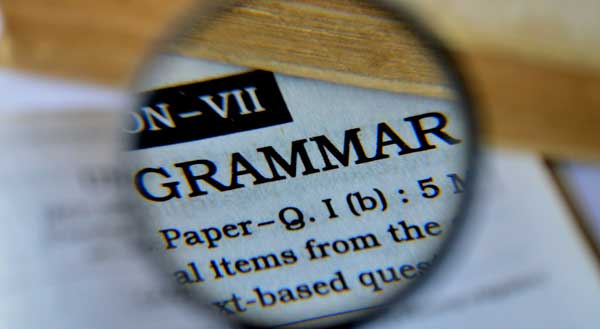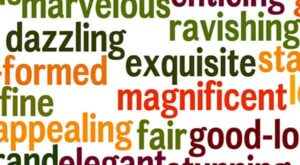10 Must-Follow Editing Tips for Nonfiction Authors

Poorly edited manuscripts are the death-knell of nonfiction books. The 10 editing tips in this article will help you take your manuscript to the quality necessary to attract the interest of reputable professional editors who can truly take your book to the next level.
Nonfiction Editing
When it comes to nonfiction, all titles are expected to be at a high level of quality, regardless of your niche.
Nonfiction authors – even first-time authors – are considered experts in their field and as such they’ll be held to a higher standard of excellence than most other authors.
Professional vs. Self-Editing
Now, even though you could technically edit your own book and do a decent job, this is something that’s frowned upon by the industry.
The reason is that experts command a level of credibility that’s expected to be matched by their book content. As a result, traditional publishers have for decades set a very high bar for their nonfiction titles.
So, when your self-published book appears side by side with a traditionally published title in an online search, it has to compare favorably it will be labelled as amateurish.
In order to compete, you really have no choice but to hire the services of a professional editor. Yet, don’t look at this as an expense; look at it as an investment.
A professionally edited book will become a true ambassador of your expertise. With the global reach of distribution channels now available to you, your book will immediately travel around the world and open new markets for your business.
Therefore, you always want to ensure that you’re putting the best product you possibly can out there.
Editing Tips for Nonfiction Authors
The following ten self-editing tips will help you fine-tune your manuscript so that you can hand it over to your professional editor in the best possible shape.
This will not only improve the quality of your writing but also make it much easier for your editor to do their job.
Tip 1: Check for Grammatical Errors

Grammar is the set of rules that tells you how to put words together in a language. Breaking these rules makes readers feel awkward, almost as if you were communicating in a language they don’t fully understand.
More importantly, since nonfiction books are expected to be written by experts, they’re also expected to be free of grammatical errors.
The nature of these errors will make them stand out like a sore thumb, and interrupting your natural flow of ideas. Avoid them at all costs.
Here are some examples to consider:
- Wrong use of contractions: Writing “The system and all it’s component parts failed catastrophically.” instead of “The system and all its component parts failed catastrophically.”
- Verb applied to the wrong subject: Writing “The breadth of the chapters aren’t a good indicator of…” instead of “The breadth of the chapters isn’t a good indicator of…”
- Wrong use of verb “To let”: Writing “It’s better that he let’s them go ahead of time.” instead of “It’s better that he lets them go ahead of time.”
- Mixing up similar-sounding words: Writing “The two central ideas compliment each other perfectly.” instead of “The two central ideas complement each other perfectly.”
- Incorrect use of a split infinitive: Writing “She tried to desperately call for help when she…” instead of “She desperately tried to call for help when she…”
Here’s a good online resource to quickly brush up on grammar basics:
https://www.grammarbook.com/english_rules.asp
Tip 2: Check for Syntax Errors
Syntax errors are usually identified by looking at the order in which the different elements of a sentence are placed, and not necessarily by looking at whether grammar rules have been broken or not.
For example, you could have a sentence where all words are correctly spelled and don’t violate grammar rules and yet when you read the sentence it still sounds wrong, or it sounds right but the meaning is not what you originally intended.
Here are some examples:
-
- Order of main sentence components: Writing “Glad she certainly is” (object > verb > subject) instead of “She is certainly glad” (subject > verb > object). Although neither is technically wrong, the syntax of the first sentence isn’t expected to come from a nonfiction author).
- Unclear references: Writing “Susan was able to reach her friend, and she was glad she did” (who was glad, Susan or her friend?) instead of “Susan was glad she was able to reach her friend.”
- Subject missing from the sentence: Writing “After scanning through all the data, major discrepancies were unearthed” (who unearthed the discrepancies?) instead of “After scanning through all the data, the researcher unearthed major discrepancies”
Tip 3: Check for Punctuation Errors

Punctuation errors are subtler than grammar or syntax errors, which makes them more difficult to detect. However, they’re central to the quality expected from a work of nonfiction.
Here are some examples:
- Missing commas: Writing “Fortunately for his family he was expected to live without further complications.” instead of “Fortunately for his family, he was expected to live without further complications.”
- A misplaced comma that changes the meaning of a sentence: Writing “The travelers, who missed their connection, were given meal vouchers” (i.e. all travelers were given meal vouchers) has a completely different meaning than writing “The travelers who missed their connection, were given meal vouchers” (i.e. only some travelers were given meal vouchers).
- Unnecessary use of commas: Writing “This clearly wasn’t the best decision, because key data points were missing from the analysis” instead of “This clearly wasn’t the best decision because key data points were missing from the analysis.”
Tip 4: Check for Capitalization Errors
Capitalization is one of those areas where rules aren’t always understood by everyone or aren’t consistently applied.
Of course, there are the basic rules everybody knows, like you should always capitalize proper nouns, such as names of people, names of places, names of organizations, etc., but there are other lesser-known rules you need to be familiar with as well.
Here are some examples:
- Capitalize names of historical events
- Capitalize names of days and months
- Capitalize people’s titles when they appear in front of their name
- Capitalize names of holidays
- Capitalize the first letter of a sentence enclosed in quotation marks
Now, the secret is to know how to capitalize the words inside titles or headings since they’re ubiquitous in nonfiction books.
Here are some general rules:
Always Capitalize:
- Verbs (do, be, come), Nouns (clinic, procedure, data), Pronouns (she, it, they), Subordinating Conjunctions (although, because, after), Adverbs (peacefully, suddenly, firmly), Adjectives (hard, deafening, short), Prepositions longer than 4 letters (during, beneath, across)
- The first and last words of a title or heading
Never Capitalize:
- Prepositions shorter than 5 letters (from, by, at)
- Articles (the, a, an)
- Coordinating Conjunctions (and, or, for)
Tip 5: Check for Hyphenation Errors
Hyphens are a unique type of punctuation mark. They’re used for connecting words or numbers that need to be related. Sometimes these groupings stand on their own and other times they’re used to modify a noun.
Here are some examples of hyphenation rules:
- Hyphenate compound adjectives (four-digit code, well-behaved child, open-minded person)
- Hyphenate words indicating a period of time when used as a modifier to a noun (twenty-seven-year-old man, fifty-year-old car, two-year-old toddler)
- Hyphenate ranges of numbers (3-5, 20%-40%, $15-$20)
- Hyphenate spelled out numerical fractions (two-thirds, one-half, three-quarters)
Tip 6: Check for Inaccurate Statements

When quoting statements, facts or figures in your manuscript, you always need to double and triple check for inaccuracies.
Sometimes it could be something as simple as a typo or a missing a figure (e.g. writing “Over 370,000 people die in road crashes each year in the U.S.” instead of “Over 37,000 people die in road crashes each year in the U.S.”).
Many times, however, inaccuracies are due to erroneous information originating from the source. Always make sure to check your information with multiple sources to find agreement and therefore weed out potential errors.
If you don’t do this thorough checking yourself, one of your readers will and cause you great embarrassment, or worse yet, it may call your book’s thesis into question.
Tip 7: Check for Proper Wording
Your nonfiction book will be addressed to a specific target audience so you need to use language that they fully understand.
If you use words above the level of your target audience, not only may they not understand the meaning, but also they may think that the writing is pretentious or even condescending.
On the other hand, if you use words that are below the level of your target audience, they may deem your book to be amateurish.
You need to know your target audience very well in advance of writing your book, ensuring that you choose the right language to make your communication smooth and efficient.
Now, there’s no right or wrong here. What works great with one audience won’t work at all with another. Your goal is to know the level of language that works well with your audience.
For example, more often than not you can’t assume people know the meanings of acronyms or abbreviations, so it’s usually a good idea to spell them out – unless you’re writing for a specialized audience like forex traders, where it would be frowned upon to spell them out (the word “forex” is a good example).
The rule is to always know your audience and write to their level of comprehension.
Tip 8: Check for Unnecessary Adjectives

Adjectives are literary devices that can be used to add color and layers to a narrative.
They work extremely well in fiction, where the goal is to “show, don’t tell,” allowing readers to experience the story through their senses rather than their intellect (fiction works primarily by enticing readers to suspend their disbelief).
But in the world of nonfiction, where critical thinking tends to take center stage, the excessive use of adjectives may have the opposite effect. At best they may be tolerated, but at worst they’ll make your writing feel amateurish.
As an expert in your field, this isn’t a feeling you want to trigger. The solution is to use adjectives sparsely and only when they add meaning and value to your writing.
If removing an adjective doesn’t change the overall meaning of your sentence, then it’s probably a good idea to keep it out. The best nonfiction books are known for their simplicity and their economy of words.
The more unnecessary words that you take out, the cleaner and clearer your text will be. For example, instead of writing: “He didn’t have any meaningful prior experience running a company of any size” write: “He didn’t have any experience running companies.”
The reworked sentence is almost half the size of the original (7 words vs. 13) without any real loss of information.
Tip 9: Check for Unnecessary Adverbs
In the same way that adjectives are used to qualify nouns, adverbs are used to qualify verbs.
This is another literary device that can be used to paint a more vivid picture in a fiction author’s narrative, but when overused it can become a nuisance to nonfiction readers.
The goal in nonfiction is to eliminate any words or groups of words that add redundancy to your text. In this genre, less is always more.
By their nature, there’s usually so much actionable information packed into nonfiction books that the excessive use of words can truly make the reading feel tortured.
For example, the sentence: “We always assume that if something absolutely makes sense to us then it must undoubtedly make sense to everybody else” can be easily rewritten as: “We always assume that if something makes sense to us then it must make sense to everybody else.”
By removing two unnecessary adverbs (“absolutely” and “undoubtedly”) we have a sentence that conveys the same meaning and feels much cleaner and to the point.
Tip 10: Proofread Your Manuscript
The last step, before you hand your manuscript over to your editor, is to do a final, fine-tooth-comb pass checking for:
- Typos (spellcheck errors, incorrect use of words – e.g. “their” instead of “there,” or “too” instead of “to”).
- Inconsistencies in your formatting – e.g. some numbered lists use letters, some use roman numerals and some use numbers.
- Punctuation errors – e.g. missing periods, a double comma, etc.
- Incorrect external references – e.g. a reference that points to the wrong article.
- Incorrect internal references – e.g. Chapter 3 has a section that refers to Chapter 6, except that the old Chapter 6 is now Chapter 5.
- Caption errors – e.g. two images in different parts of the book have exactly the same caption.
Wrapping Up
Before you hand over your completed manuscript to your professional editor, use the above tip sheet to make sure that it’s as free of errors as possible.
If you don’t do this work ahead of time then your editor will, unnecessarily increasing the size of your final bill.
Next Steps
Now that you’ve produced the best manuscript you possibly can, it’s time to turn things over to the professionals to help you level the playing field with traditionally published nonfiction books.
To help you select the ideal candidate for the job, I’ve created the following companion article: “How to Find a Book Editor that’s Perfect for Your Nonfiction Book”.
Good luck!
If you enjoyed this article and are in the process of writing a nonfiction book, be sure to check out my free nonfiction success guide, drawn from years of experience editing books for bestselling authors (including a New York Times bestseller) and ghostwriting for CEOs and politicians. Simply click here to get instant access.
Ben
Leave me a comment below if you have any questions or a specific need that I can help you address – I operate an author services firm that specializes in helping entrepreneurs, professionals and business owners who want to publish books as a calling card for prospects, to establish their status as an expert or to just to generate additional leads for their businesses.
Here are some related posts I highly recommend:
How Long Does it Take to Write a Book to Help Grow Your Business?
The 10 Must-Have Writing Skills for Nonfiction Authors
The 7 Key Rules for Writers of Outstanding Nonfiction Books
Learn 10 Powerful Writing Habits to Fast Track Your Nonfiction Book
How Do I Promote My Self-Published Nonfiction Book?

Bennett R. Coles is an award-winning author of six books published through Harper Collins (New York) and Titan Publishing Group (London). He is also the publisher at Promontory Press, editor for multiple bestselling authors (including a NY Times bestseller), ghostwriter for CEOs and politicians and the founder of Cascadia Author Services, a boutique full-service firm that specializes in premium author services specifically designed for busy professionals. Our end-to-end services include writer coaching, ghostwriting, editing, proofing, cover design, book layout, eBook production, marketing, printing and distribution.







Leave a Reply